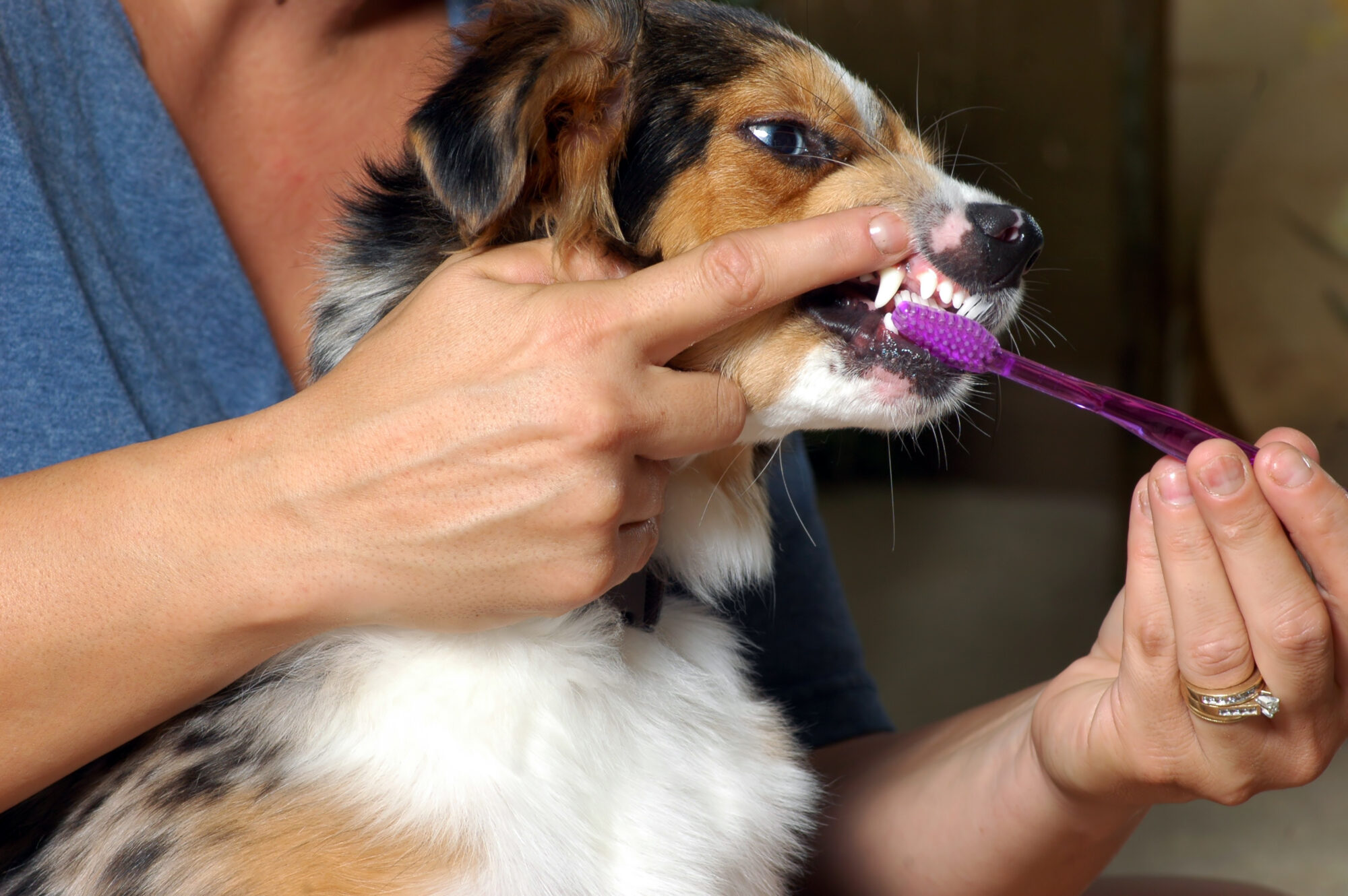4 Steps to Provide Proper Dental Care for Your Pets

Keeping your cat or dog healthy and happy throughout her life means treating her to plenty of playtime, proper nutrition, routine wellness care, and pet dental care.
Your pet’s pearly whites play a more important role in her overall health than you may realize. Periodontal (gum) disease is extremely painful, and the bacteria from your pet’s gums can travel to her organs and cause irreversible damage.
Providing ongoing dental care for your pets is the best way to combat the effects of dental disease and lower your dog periodontal disease treatment cost.
At Curem Veterinary Care, we encourage our pet families to schedule regular dental cleanings and provide supportive care at home. Read on for four steps you can take to prevent cat dental disease or dog dental disease.
Step One: Schedule a Professional Dental Cleaning
Your pet’s Curem Veterinary Care doctor will look inside your pet’s mouth during every wellness appointment to check for loose or broken teeth, swelling, lumps, or other signs of dental disease and make a recommendation if further treatment is warranted.
Professional dental cleanings are performed under general anesthesia, which enables our veterinarian to thoroughly clean the teeth, remove plaque, take digital X-rays, and perform necessary extractions.
You will be amazed how clean your pet’s mouth is after the appointment!
Step Two: Choose a Pet Food That Promotes Oral Health
Dental diets that help control plaque and tartar buildup are one way to support your pet’s dental health every day at home. Some dental diets also help combat bad breath to make those kitty and puppy kisses even more adorable! Your pet’s veterinarian is happy to recommend an appropriate dental diet.
Step Three: Provide Dental Treats and Chews
A lot of pet parents ask us how to keep a cat’s teeth clean without brushing, and dental treats and chews can help. Another option: chew toys that encourage your cat to nibble. To avoid tooth fractures, make sure the toy isn’t any harder than your fingernail. When shopping for chews and treats for cats or dogs, check the label for high-quality, natural ingredients, as well as the Seal of Acceptance from the Veterinary Oral Health Council. Chews should be a size and texture appropriate for your pet. Avoid anything that splinters or that could present a choking hazard.
Step Four: Brush Those Teeth
Or at least try! We know that some pets are better than others when it comes to having their teeth brushed. Use a toothbrush and toothpaste made just for pets, and aim for brushing those teeth every day. We are happy to demonstrate how to brush your pet’s teeth at your next visit.
Please contact us to schedule an examination, or use our online form to request an appointment.
